Reading Decoding Doesn’t Have to be a Mystery!
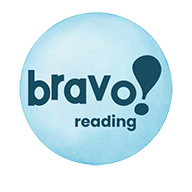
Reading decoding is a fundamental skill that enables students to break down and understand written words. But for children with dyslexia, this process can be particularly challenging. Dyslexia, a language-based learning difference, often affects the ability to decode words accurately and fluently. This leads to difficulties in reading comprehension and overall academic performance.

Bravo! Reading’s specialized reading decoding programs are designed to address these challenges head-on, using evidence-based strategies to help dyslexic learners develop strong reading decoding skills.
By providing targeted support and engaging, multisensory activities, Bravo! Reading empowers students with dyslexia to overcome their reading difficulties and achieve lasting success in their literacy journey.
Decoding is the true backbone of reading. When a child starts to decode words, the process of translating printed letters and words into speech occurs.
Decoding words requires the child to associate letters with sounds, blend the sounds together, and then decide how the word represents that combination of letters.
The Heartbreaking Result of Struggling to Sound Out Words
When children have poor decoding skills, it translates to poor decoding strategies because they have few ways to sound out new or unfamiliar words. Struggling readers falter when coming across words they don’t know.

Because they lack decoding strategies, these readers – often kids with dyslexia – engage in a series of bad habits in desperate attempts to sound out the words. When these kids decode words successfully, the process is highly dependent on strong reading strategies and vice versa.
Kids who have poor decoding skills usually engage in one or all of the Three Pillars of Poor Reading. These pillars of poor reading are nothing more than bad habits that can be fixed.
However, unless the reader is given the right decoding strategies to override these bad habits and turn them into strong abilities to decode words, then failure is imminent.
The Three Pillars of Poor Reading involve guessing at words, memorizing words, and using trial and error learning to figure out what an unknown word might be. These are weak (or nonexistent) strategies for sounding out new and unfamiliar words.
When readers are weak at decoding words, they don’t have a workable system (strategy) to use when they come across new words. They usually panic when seeing new words and end up taking wild stabs at what those words might be.
Consequently, these guesses are wrong, and soon decoding in reading becomes a weakness instead of a strength.
Poor Reading Decoding Starts This Way!
Random success while decoding words is the worst danger of all to a child’s reading development! If these readers hadn’t been met with this random, limited success, they most likely would have moved on to another method of sounding out words…one tied to strategy.

But those arbitrary successes keep them swinging in the game of “not decoding words”.
If a reader’s decoding skills are weak, fluency and comprehension skills suffer. It only makes sense. Due to the lack of decoding strategies used to sound out words, too much guessing goes on. Mistakes are also made because consistency is missing
Poor decoders fumble with words while reading as they struggle to decode words. This lack of strong decoding in reading naturally slows down the ability to read quickly and efficiently. Because of this, fluency scores are affected in a negative way. Poor reading comprehension skills usually crop up as well. Reading becomes too much of a chore because of weak decoding strategies.
When these same poor decoders try to remember what they just read, it’s too laborious because of the misinformation they took in. All the guessing, attempts at memorization, and random efforts at determining what words are change the meaning of text.
Grades plummet because reading skills are poor! Reading skills affect every subject in school, so it’s important that students have strong reading skills.
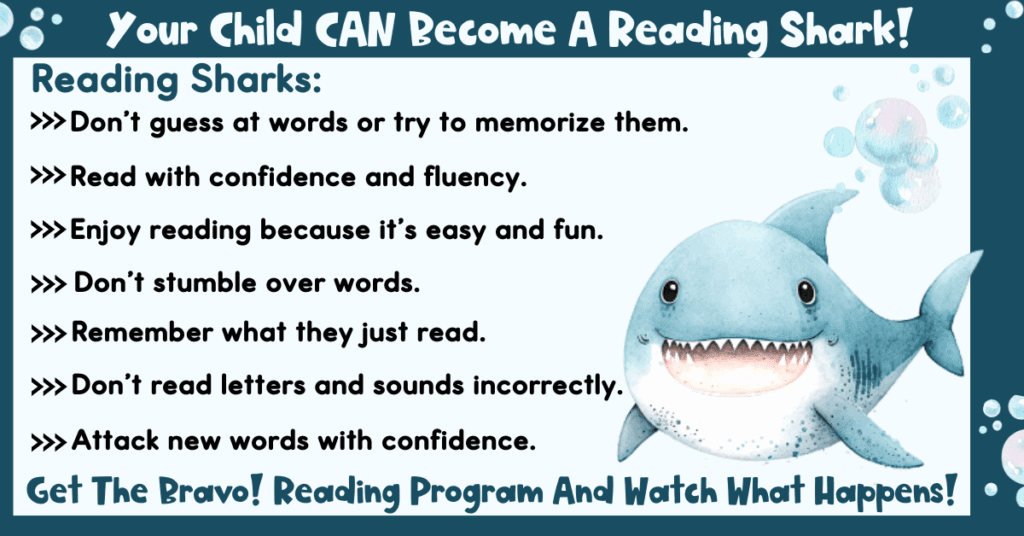
The Ultimate Power of Automatic Reading Decoding
Do you remember when you first learned to drive? There were so many things to think about. The oncoming traffic, turning signals, traffic lights, stop signs, braking, steering, and staying within the lines on the road.

But after a while, you probably found yourself arriving someplace when you didn’t even remember part of the route – of how you got there.
This is called automaticity.
Automaticity is an activity that is performed involuntarily or unconsciously as a reflex or ingrained habit. It’s very important for strong decoding in reading.
After all, if you had to consciously sound out each separate letter as you read, it would take a long time and require too much effort.
Children with dyslexia struggle to decode because they lack this automaticity. At some point, these kids failed to develop decoding strategies that evolved into decoding strength. As a result, they end up guessing at words and randomly applying spelling and reading rules.
Developing strong decoding strategies is a lot like driving and requires automaticity. Just like driving, there are a lot of different processes going on – all at the same time.
The True Value Of Reading Decoding
The brain, the eyes, and the ears must all work together as a team for strong decoding in reading to take place . This is why children with dyslexia struggle with reading.

They have a difficult time coordinating these sensory components, which leads to frustration.
Making reading decoding an automatic process is difficult for kids with dyslexia when using traditional methods. But with the right set of tools, it’s easy
Once decoding becomes an automatic process, then fluency and comprehension skills develop.
If you think about it, it’s no wonder kids with dyslexia struggle with decoding in reading as well as finding workable decoding strategies!
There are just so many different skills at play when a child is decoding text!

How Sounding Out Words Makes An Impact On Reading Decoding
A lot goes on when your child sits down in front of a reading passage and attempts decoding words. There’s so much that can go wrong! Kids with dyslexia have an even more difficult time, because the bit-by-bit process of decoding is foreign to their line of thinking. It’s important to understand what goes on while your child is decoding words.
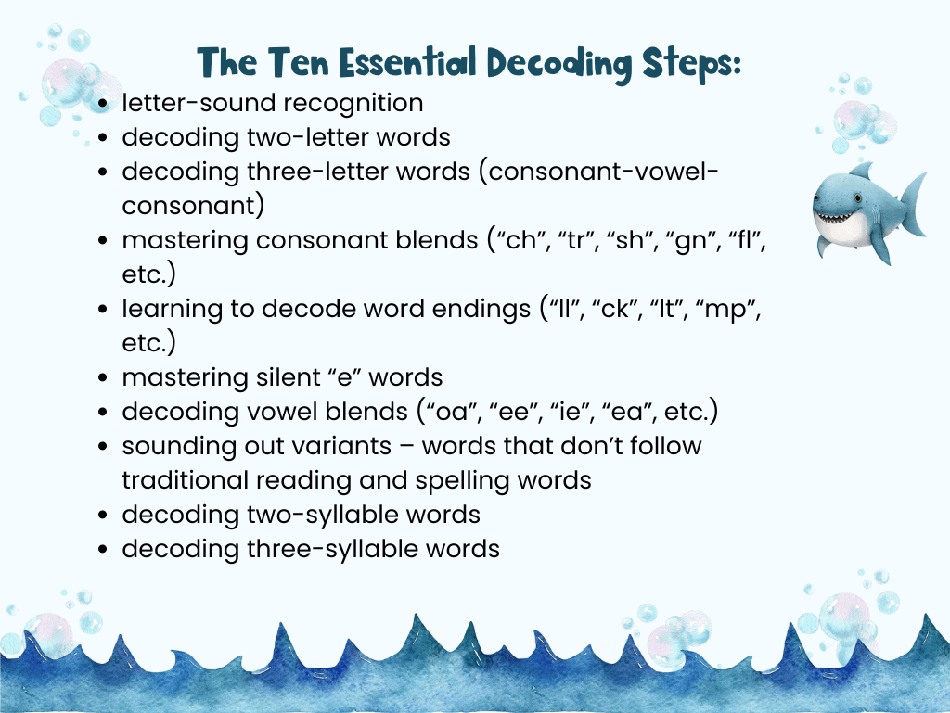

How to Avoid the Decoding Dilemma Like a Thief in the Night!
Just like driving, most of us figure out how to master decoding in reading with some form of efficiency. But, all too often, kids with dyslexia struggle to put all these skills together in a usable package.

Because of this, they lack decoding strategies that work. Reading scores stay low and school becomes a torture chamber for them. Often, they’re asked to read out loud in front of the class, which causes deep embarrassment.
These kids learn to avoid decoding in reading at costs. But they shouldn’t have to! They simply need a system that teaches them to decode in a way they can understand, not one geared for mainstream learners.
Once these children can decode with efficiency, proper decoding strategies fall into place!
Letter-Sound Recognition – the Kick-start to Your Child’s Reading Machine
The first decoding strategy your struggling reader must have is strong letter-sound recognition. This includes both long and short vowel sounds.

Additionally, your child must be able to recognize letters and know their sounds with automaticity. If your child is pausing when sounding out words, most likely letter-sound recognition is poor.
Letter-sound recognition is the first step decoding strategy your child must have! And it must be a strong strategy – performed with automaticity – or your child will always struggle to decode. Children with dyslexia often struggle with letter-sound recognition.
There are many reasons for this, but one of the biggest ones is due to their inconsistency at retaining information. Kids with dyslexia will know something one moment but the next moment it might disappear in the wind. If given a test on letter sounds one day, these kids might flourish. But give another day, they might fail the test completely.

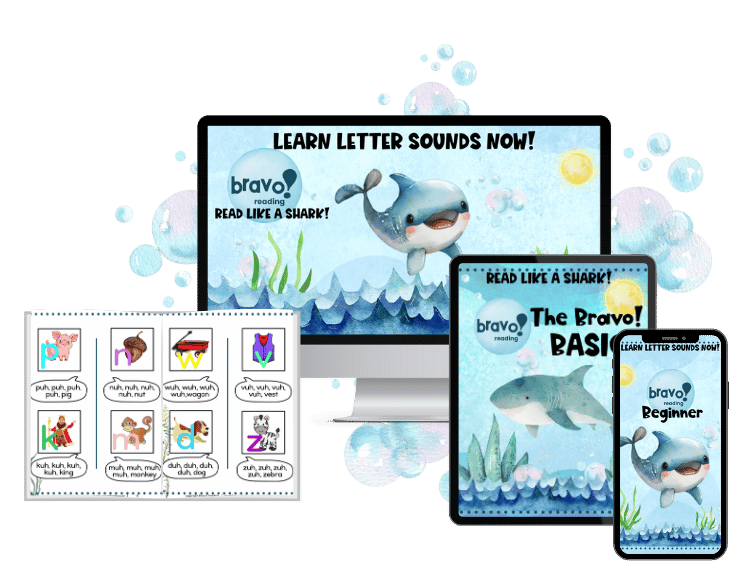
If you’re looking for a quick, easy, and permanent solution to help your child learn letter sounds, check out the Bravo! Beginner.
The Bravo! Beginner was designed for kids with dyslexia and has been used for over 23 years with a 98% success rate. Even better, kids love using it, even teens and older children. It uses large motor movement in a way that kids with dyslexia can internalize. Letter sounds are learned quickly and easily!

How To Turn Your Child Into A Reading Shark
Even older children and teens struggle with decoding in reading. Because of this, it’s common for teens to have such a weak decoding foundation that even letter sounds are weak or missing, especially those tricky vowel sounds!

Instead of taking the older student all the way back to square one and working on letter sounds, most schools and programs will take readers where they should be and try to strengthen skills from there.
This doesn’t work!
Decoding in reading forms a foundation, and because of this, there’s a built-in hierarchy. One skill builds on the next, and so on. If there are missing skills or strategies, then the reader is frustrated, lacks confidence, and often fails not only reading but most subjects.
Kids need to be strong in letter-sound recognition before being asked to blend two or more sounds together! For example, if a fifth-grader is weak in letter-sounds, then that’s where instruction should be. Grade-level material should not be taught, because the reader doesn’t have the decoding in reading foundation for this. Out of desperation, the Three Pillars of Poor Reading set in, and the student is guessing wildly at words instead of strategically sounding them out.
Make It Automatic To Make It Easy!
Once letter-sounds can be recognized and used with automaticity, it’s time teach the reader how to blend two letter sounds together to form a word. This is one of the most overlooked decoding strategies that schools and traditional reading programs overlook.
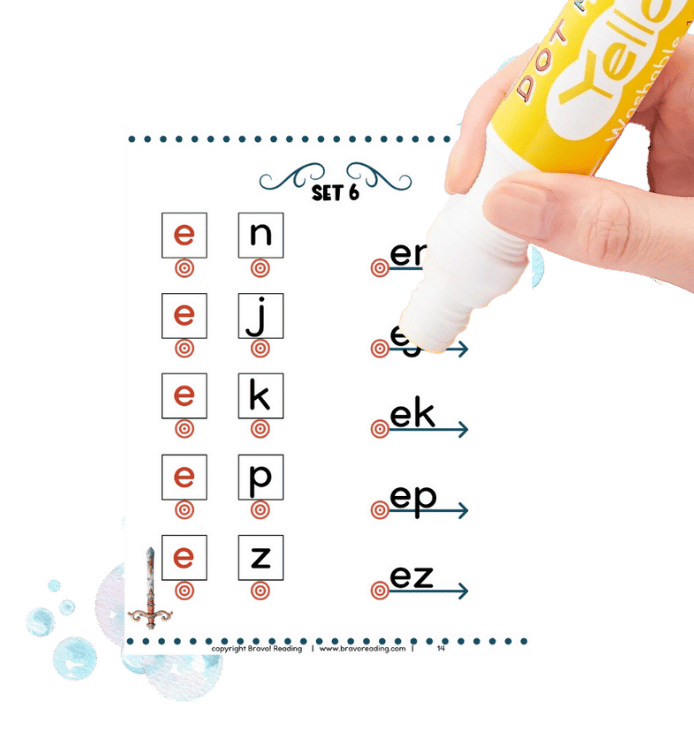
It’s crucially important for kids with dyslexia or other reading disorders to sound out or decode two-letter words before moving on to consonant-vowel-consonant words. Traditional reading programs throw the reader right into sounding out these three-letter words when decoding two-letter words hasn’t been mastered. This is asking your child to run before walking.
The reader has to understand that each of the letters is, in essence, a code. And here’s the tricky part. These two sounds (codes) come together to form a consistent sound, which is a word. There aren’t a lot of two-letter words, but that’s okay!
Kids with dyslexia thrive when they learn to decode using nonsense words!
Kids with dyslexia not only need but crave this step-by-step building of decoding foundation. Next Steps in Building a Strong Decoding Foundation
Once two-letter word blending is mastered, your child can now decode the traditional consonant-vowel-consonant words. Having your child master two letters before sounding out three letters provides a firm decoding in reading foundation. Consequently, strong decoding strategies are constructed. This will eventually help your child sound out multi-syllable words!
Here are some examples of consonant-vowel-consonant words: “cat”, “not”, “pet”, “sit”, “rod”, “map”, “tin”, “get”, “zap”, and “jet”.
Just like building blocks to create a house, your child builds decoding strategies one letter at a time.
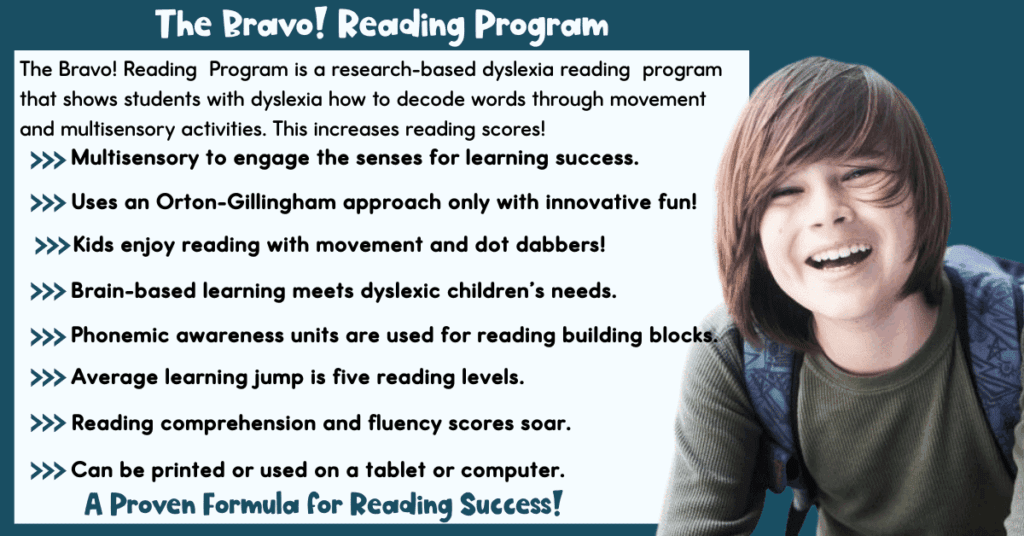
Decoding Skills In Reading: Their Impact Is Enormous!
By this point, your child is blending three letters together! That’s amazing! And to think, this blending process started with that first letter-sound recognition component. From there, two-letter words were mastered, and then three.

If your child is struggling to decode three-letter words, it’s important to put on the brakes! To build strong decoding in reading skills, it’s important your child goes back and follows those first three blending steps. This is what will lead to stronger and better decoding strategies down the road.
Please understand that if your child is struggling with decoding skills that typical decoding strategies won’t work. Instead, your child needs decoding methods designed for children with dyslexia.. That’s because children with dyslexia learn differently than other children.
Use Nonsense Words To Create A Real World Reader!
Kids with dyslexia and other reading disorders are weak in decoding strategies. Because of this, they develop bad reading habits.
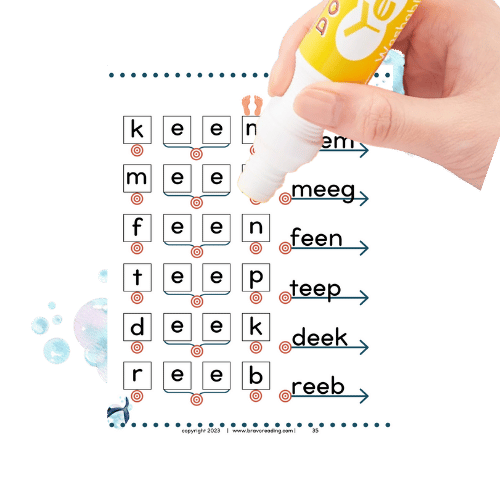
Traditional reading programs throw more phonics at these kids, apparently thinking more of the same that didn’t work all day is going to make the difference.
It doesn’t!
Having kids decode nonsense words can make a huge difference in developing strong decoding strategies! Because kids with dyslexia are highly meaning-driven, nonsense words are the perfect solution because they can’t “sound out” a word based on what they think it means. The nonsense words force the issue. The child has to look at each letter and sound it out letter by letter.
This also helps the blending process for decoding in reading. Kids with dyslexia like to learn from the “whole” down to bits and pieces instead of the other way around. If they look at a word that is familiar yet they still aren’t sure of what it is, these kids will bounce out a guess immediately instead of sounding it out. Guessing at words is a weak decoding strategy and results in poor reading fluency and comprehension.
Nonsense words help kids with dyslexia develop stronger decoding and reading strategies, break bad reading habits, and help with the blending process.
Focus on Reading Decoding First To Boost Skills!
In an effort to understand what they are reading, kids with dyslexia will focus on the meaning of the word instead of blending the sounds together to decode the word. If they can’t immediately figure out what the word is – without decoding it – they will often guess at it.

Nonsense words take this guesswork out of the equation because the decoder has no choice but to focus on blending the sounds together. There is no meaning to a nonsense word, and decoding is the only choice when reading a nonsense word! Guessing isn’t an option.
Nonsense words are made up words that have no meaning. For two-letter words, we use nonsense words that start with a vowel and end with a consonant, words like “ot”, “am”, “it”, and “ux”.

Build Amazing Reading Decoding Skills to Empower Your Child
Building a strong reading foundation relies on mastering decoding skills. There are ten essential decoding skills that make up a strong reading foundation. Understanding why these ten essential decoding steps are crucial can make all the difference in a child’s literacy development.
Decoding is the process of translating written text into spoken language by recognizing letter-sound relationships and blending sounds to form words. Each of the ten steps plays a vital role in this process, from basic letter-sound recognition to complex word patterns.
By focusing on these ten steps, you can ensure that your child develops the necessary skills to read fluently and with comprehension. These foundational steps not only support early reading success but also pave the way for continued academic achievement and a lifelong love of reading.


How To Structure A Reading Program With Predictability
Kids with dyslexia need predictability for decoding in reading. And that’s not “drill and kill” worksheets or hours of flashcards that don’t do any good. No, these learners need to know what to expect next. Kids with dyslexia worry about next steps – it’s how they survive a “topsy-turvey” world.

The dyslexic reader needs brain-based learning (most kids do as well) to make decoding strategies strong. It’s also more fun this way, as movement is involved with brain-based learning.
And of course, most people know that the dyslexic reader needs to learn through a multi-sensory manner.
Up the hierarchy ladder the decoder goes. Bravo! ensure decoding and reading mastery is achieved at each step along the way with a quick end of level checkup (evaluation).
If your child passes the Bravo! Checkup, then your child moves to the next level. If not, a recipe of more practice follows. Rinse and repeat until decoding becomes an automatic process. When decoding strategies are strong, reading is an easy process.
The Magic Reading Bullet: Small Units Of Sound
Another important component to developing strong decoding in reading is phonemic or phonological awareness. This is the ability to recognize and work with individual units of sound (phonemes). The process of phonemic awareness includes blending sounds into words, segmenting words into sounds, and manipulating these small units of sounds in spoken words.

Phonemes are the smallest parts of spoken language that come together to form words. Our language is made up of forty-four phonemes. Units of sound like “am”, “it”, “ed”, “op”, and “ug” are examples of phonemic units or phonemes.
Research tells us that kids with dyslexia learn best by displaying mastery of those forty-four phonemic units of sound.
At Bravo! (after mastering letter sounds, two-letter words, and three-letter words), rungs are added to the phonemic ladder. This is one of the most important things that can be done to build strong reading strategies!
Bravo! stretches phonemic awareness skills by adding blends (both consonant and vowel), the elusive and frustrating silent e, word endings, variants (words that don’t follow basic rules), and then kids get to sound out multi-syllable words. (See the Ten Steps to Decoding Strategy Success above for more information.)
This makes sense to the dyslexic reader and builds strong decoding in reading abilities! By not getting overwhelmed, skills are added one fun, easy step at a time. From there, your child can sound out words with ease, which results in better reading scores across the board!
The Allure Of The Orton-Gillingham Approach
It’s important to have a predictable set of rules in order for decoding in reading skills to be up to strong. The Orton-Gillingham approach to reading and spelling is highly structured, which helps the dyslexic reader. Once again, it is based on those basic forty-four phonemic units. However, most kids with dyslexia need more movement.

The Orton-Gillingham approach is based on research done in the 1930’s by neuropsychiatrist and pathologist Dr. Samuel T. Orton and educator, psychologist Anna Gillingham.
The Orton-Gillingham researchers believed that students with severe dyslexia needed a multisensory approach, especially in the use of auditory, visual, and kinesthetic channels.
A multi-sensory approach means students are learning language by hearing, speaking, seeing, and writing. The process involves listening to sounds and saying the sounds and names of letters while writing them. By developing decoding habits with a multi-sensory approach, kids can develop strong decoding strategies right from the start!
When your child is a fluent reader, a whole new world opens up!




